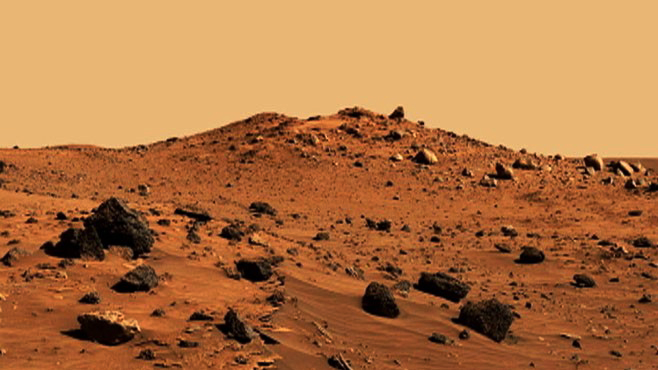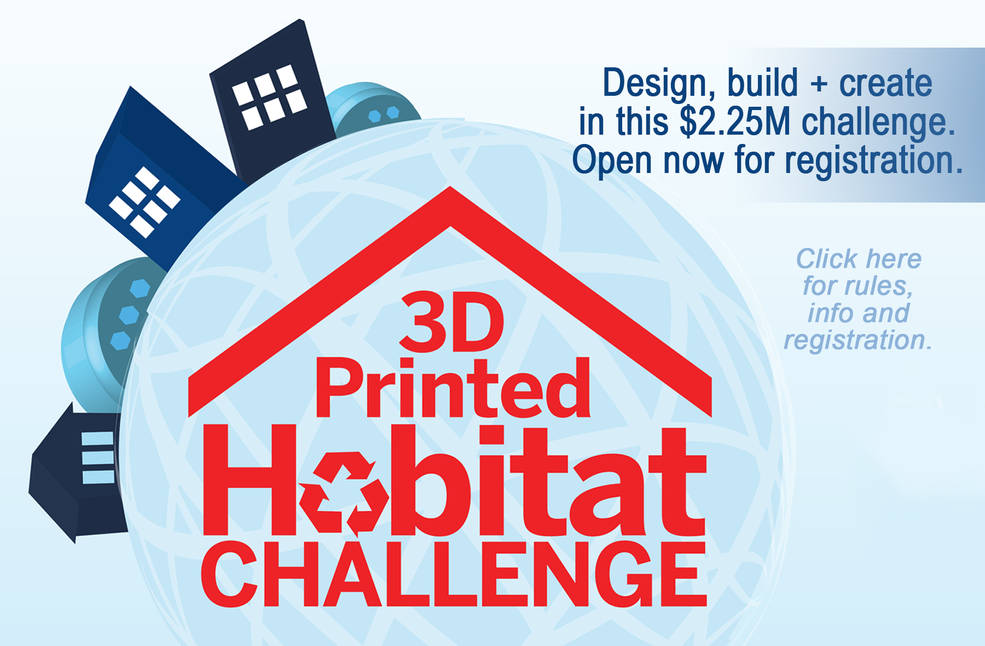Mars and Earth have approximately the same landmass. Shelter is among the most basic and crucial human needs.
In another Public-Private-Partnership (PPP), the US Government space exploration agency, NASA, has challenged members of the general public to design innovative structures for construction on both Earth and Mars.
A NASA press release says the agency and the National Additive Manufacturing Innovation Institute known as America Makes, are holding the new $2.25 million competition to design and build a 3-D printed habitat for deep space exploration, including the agency’s journey to Mars.
The multi-phase 3-D Printed Habitat Challenge, part of NASA’s Centennial Challenges program, is designed to advance the additive construction technology needed to create sustainable housing solutions for Earth and beyond.
Shelter is among the most basic and crucial human needs, but packing enough materials and equipment to build a habitat on a distant planet would take up valuable cargo space that could be used for other life-sustaining provisions. The ability to manufacture a habitat using indigenous materials, combined with material that would otherwise be waste from the spacecraft, would be invaluable.
Mars and Earth have approximately the same landmass, according to the website Explore-agency.com. Even though Mars has only 15% of the Earth’s volume and just over 10% of the Earth’s mass, around two thirds of the Earth’s surface is covered in water. Martian surface gravity is only 37% of the Earth’s (meaning you could leap nearly three times higher on Mars).
Named after the Roman god of war, Mars is often described as the “Red Planet” due to its reddish appearance. It is a terrestrial planet with a thin atmosphere composed primarily of carbon dioxide. It is the fourth planet from the Sun.
Mars is also home to the tallest mountain in the solar system. Olympus Mons, a shield volcano, is 21km high and 600km in diameter. Despite having formed over billions of years, evidence from volcanic lava flows is so recent many scientists believe the volcano could still be active.
On Mars the Sun appears about half the size as it does on Earth. At the closest point to the Sun, the Martian southern hemisphere leans towards the Sun, causing a short, intensely hot summer, while the northern hemisphere endures a brief, cold winter: at its farthest point from the Sun, the Martian northern hemisphere leans towards the Sun, causing a long, mild summer, while the southern hemisphere endures a lengthy, cold winter.
Mars has the largest dust storms in the solar system. The storms can last for months and cover the entire planet. The seasons are extreme because its elliptical (oval-shaped) orbital path around the Sun is more elongated than most other planets in the solar system.
The NASA press release says the first phase of the competition, announced Saturday at the Bay Area Maker Faire in San Mateo, California, runs through Sept. 27. This phase, a design competition, calls on participants to develop state-of-the-art architectural concepts that take advantage of the unique capabilities 3-D printing offers. The top 30 submissions will be judged and a prize purse of $50,000 will be awarded at the 2015 World Maker Faire in New York.
“The future possibilities for 3-D printing are inspiring, and the technology is extremely important to deep space exploration,” said Sam Ortega, Centennial Challenges program manager. “This challenge definitely raises the bar from what we are currently capable of, and we are excited to see what the maker community does with it.”
The second phase of the competition is divided into two levels. The Structural Member Competition (Level 1) focuses on the fabrication technologies needed to manufacture structural components from a combination of indigenous materials and recyclables, or indigenous materials alone. The On-Site Habitat Competition (Level 2) challenges competitors to fabricate full-scale habitats using indigenous materials or indigenous materials combined with recyclables. Both levels open for registration Sept. 26, and each carries a $1.1 million prize.
Winning concepts and products will help NASA build the technical expertise to send habitat-manufacturing machines to distant destinations, such as Mars, to build shelters for the human explorers who follow. On Earth, these capabilities may be used one day to construct affordable housing in remote locations with limited access to conventional building materials.
“America Makes is honored to be a partner in this potentially revolutionary competition,” said Ralph Resnick, founding director of America Makes. “We believe that 3D printing/Additive Manufacturing has the power to fundamentally change the way people approach design and construction for habitats, both on earth and off, and we are excitedly awaiting submissions from all types of competitors.”
America Makes is a public/private partnership of organizations focused on accelerating the capabilities and adoption of additive manufacturing technology.
The Centennial Challenges Program is managed at NASA’s Marshall Space Flight Center in Huntsville, Alabama for the agency’s Space Technology Mission Directorate in Washington.
Meanwhile, an astrophysics enthusiast blogger has speculated with pictures China has discovered a secret military base on the moon. The story might read like fiction to some, but sometimes things that sound like fiction do eventually get relevance in the long run. We therefore repeat this story, even as we take it with caution.
The Chinese have discovered a military base on ‘the far side’ of the moon where earth-based observation telescopes cannot see because that side is permanently hidden from view when you are looking at the moon from earth. The American Space Agency (NASA) has allegedly known about this ‘alien base’ for years but they have kept completely quiet about it. The blogger Dave Reneke reports this story comes from Biz-Feed and it is reproduced without change or further embellishment:
Dr. Micheal Salla has indicated that there is a Military Industrial Extraterrestrial Complex or MIEC, and that Earth is being assimilated by an alien agenda which also operates on Earth’s Moon, and that this would explain why so many radio telescopes are searching for signals from aliens, and more being built as we speak, yet no reported signals from aliens were reported to the public.
The report stipulates: “I was sent some pictures by a source who claims China will be releasing Hi Res images taken by the Chang’e-2 moon orbiter, which clearly show buildings and structures on the moon’s surface. He also claims NASA has deliberately bombed important areas of the Moon in an effort to destroy ancient artefacts and facility’s.






